Skate to Me, Baby!
Alright, I'll say it. In the beginning, lockdown was pretty easy for me. Stay home? Done. Keep a small, tight social circle? Easy. Don't go outside unless it's to exercise? Twist my arm. I'm an introvert through and through, and in the months leading up to the pandemic, I was feeling pretty burned out from trying to balance working at a grocery store, figuring out what I was gonna do post-graduation, and nurture my personal life, so having an excuse to just stay home and chill was not a tall order for me.
But then the pandemic dragged on, and it became apparent that COVID-19 wasn't going to go away just by laying low for a while. Eventually, my large threshold for solitude broke, and that...had never really happened before. I felt this itch to go outside, and sometimes I would go for aimless walks around my neighborhood but...I wanted to do more than just walk.
I wanted to roll.
Somehow, through the creepy magic of the Instagram algorithm, a reel of a girl roller skating popped up on my Explore page. It was just a quick little video of a girl jumping over the camera while "Wolves" by Kanye West played in the background, but I was intrigued so I kept scrolling and...I fell in love. The moves were so fluid and stylish, and everybody looked so cool and happy and...free. Skating looked like good cardio, good exercise for your legs, and you could still wear cool clothes while you did it! Or you could not, which was also appealing. With skating, you could come as you are and be welcomed no matter what size, colour, or creed you were. As long as you've got some variation of four wheels, you're in the gang, and that's something I could really get behind.
Before scraping the money together to buy some skates, I really wanted to make sure this was something I would commit to-after all, a good pair will run you at least $200. So I read blogs about skating, watched videos of skate reviews and tutorials on how to do some moves on YouTube, and scoped out some popular brands. I looked up dance skating, park skating, and roller derby, and eventually it became part of my morning routine. I would wake up, open Insta, and then head to the Explore page and lose myself in all of the cool videos and pictures of pretty skate setups until about 1pm, when I would shamefully get out of bed looking for "breakfast."
And that's when I knew. It was time.
When the snow started to melt that winter, and the ground was no longer a slippery death trap, I used some money I had made while writing my play and bought my first ever pair of skates.
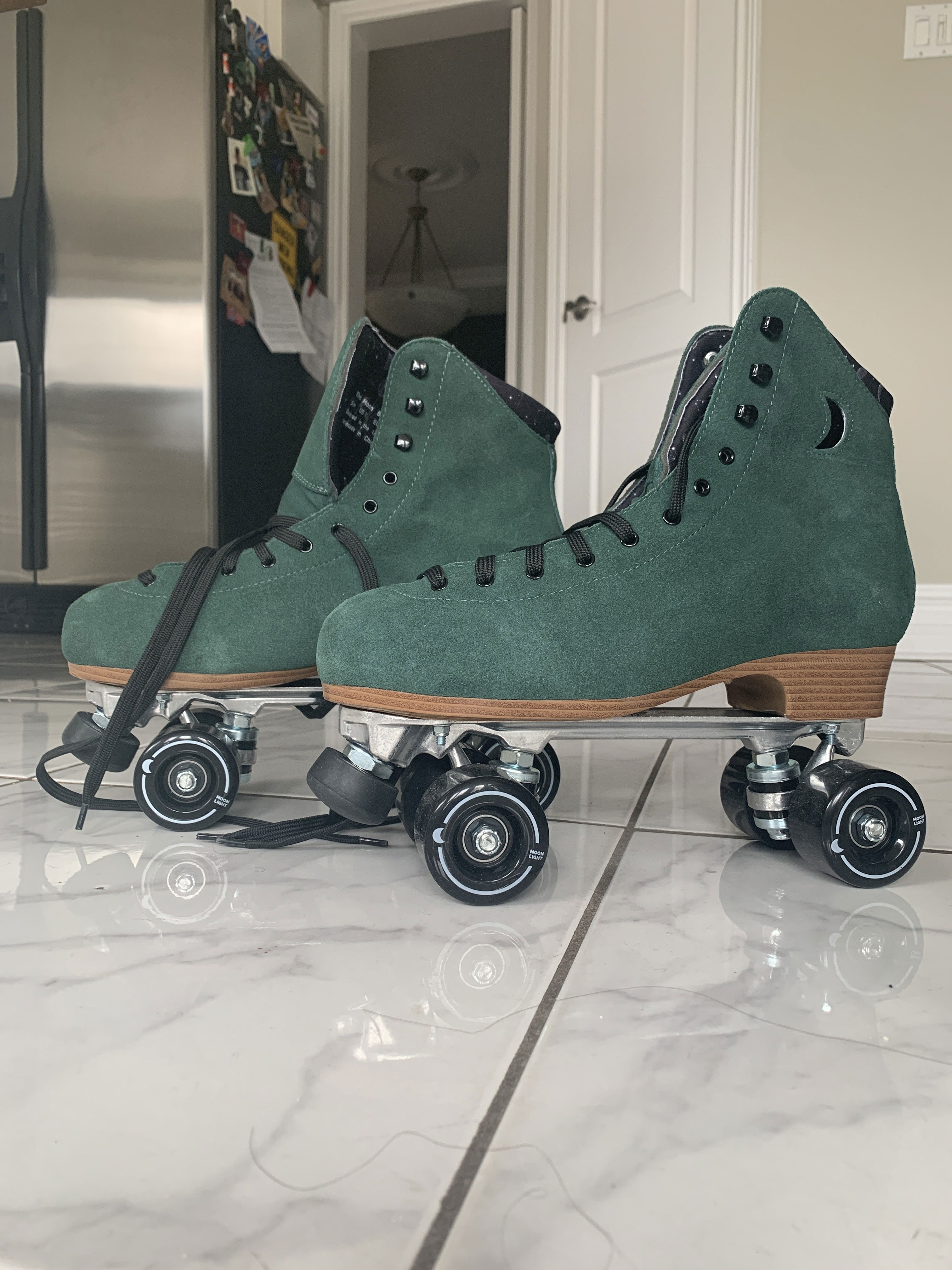
What a beaut.
"Emerald City" by Moonlight Roller Skates, a Black-owned, fairly new skate company who makes possibly the comfiest dance skates around. Perfect for beginners because there's no break-in period, and they offer possibly the widest variety of sizes out of any of the skate brands I researched. I've had so much fun rolling around in these bad boys, learning new moves, and just generally getting outside and grooving to some music for a while (stay tuned for my skate playlist at the end of this post). Now whenever I start to feel too cooped up, I reach for my skates, find the nearest patch of smooth pavement, and let the wind hit my face until I feel better. It's not only a great way to stretch my legs, but the culture that comes with skating makes me feel like I'm a part of something bigger. Skating has a deep connection to the Black community, but years of racism and gentrification has made it difficult for this community to come together. So when I put my skates on, I know I'm keeping part of my culture alive, and that makes me feel better too.
A Brief History of Skating
The first recorded use of skating was in a theatre production in 1743, when actors strapped wheels onto their feet to mimic the look of ice skating on stage. John Joseph Merlin is accredited with having invented the first roller skate, which only had two wheels at the time. He debuted it at a masquerade ball held by a famous opera singer, skating and playing the violin at the same time. He quickly lost control, and crashed into a very heavy, and very expensive mirror, breaking both himself and his instrument at the same time.
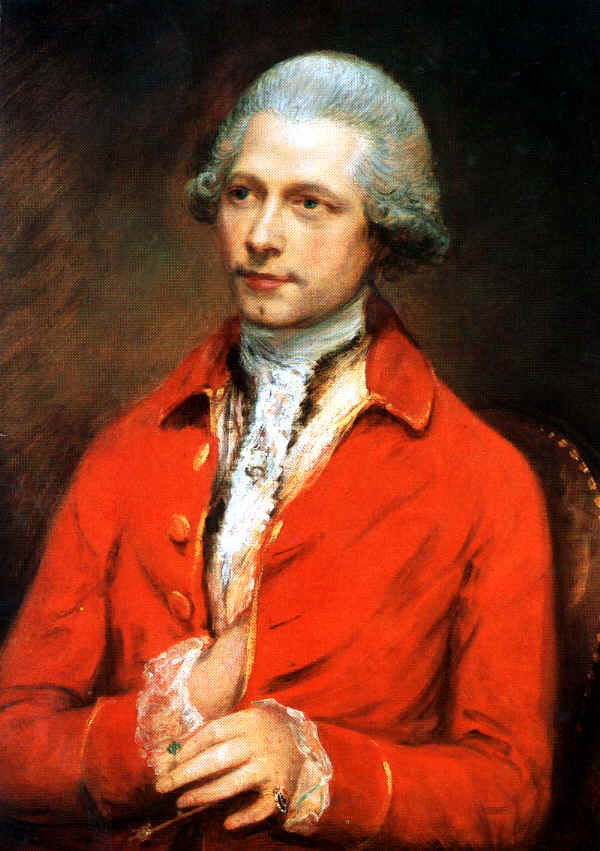
John Joseph Merlin, seen here, probably hiding yet another skate injury.
Other inventors tried their hands at perfecting the roller skate over the years, but it wasn't until 1863 when a man named James Plimpton invented the quad skate that it became a popular pastime. Ever the savvy businessman, James quickly opened the first skating rinks in Rhode Island, and taught skating lessons. He also marketed skating as an acceptable pastime for both men and women, making skating an appropriate date for young couples to partake in without needing a chaperone.
The medical field also began to take notice, and declared skating a suitable form of exercise, prompting the mass production of skates across America. And just like that, a culture was born.
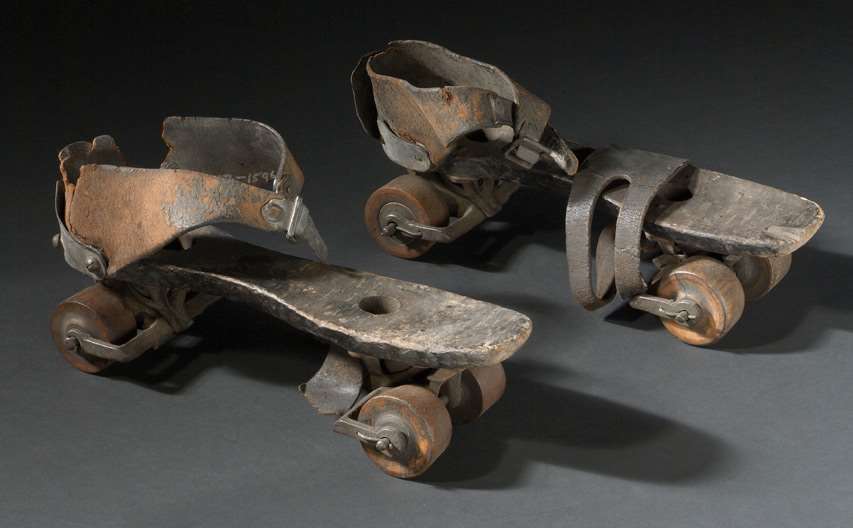
Skating continued being a popular pastime into the civil rights era, where conflict started to arise when, at first, people of colour were banned from skating rinks. When the segregation era rolled in, rinks started holding segregated skate nights. These nights took on many names, such as "soul night," "R&B night," or "urban night," but the name that eventually stuck was "'adult night."
"Adult night" didn't necessarily mean only adults were allowed at the skating rink. It was simply code for "Black." People of all colours attended adult nights, but it was largely a gathering for the Black community in any given city to come together and revel in their culture in a safe space. The HBO documentary "United Skates" beautifully depicts the many different types of skate moves different regions created over the years, from Chicago to Baltimore to Los Angeles, just to name a few. My personal favourite is called "The Gaga," where skaters move their left leg to the vocals of a James Brown song, while moving their right leg to the beat of the horns.
The documentary also highlights the positive influence roller rinks had on marginalized communities. Rink owners would post pictures of notable Black leaders from history around their rinks at a child's eye level, so that young kids would see their history every time they came for a skate. Rival gangs would declare the sole local roller rink as neutral territory, making skating a peaceful activity that the whole neighborhood could comfortably take part in.
Nowadays, roller rinks are struggling. Zoning laws, gentrification, and a struggling economy are snuffing out the last roller rinks in America. I myself only know of one rink around me in Canada, and it's an hour away from where I live. And I'm one of the lucky ones. I know skate shops hold their own skate nights, renting out parks and community centers for the odd skate event here and there, but it's difficult to run an independent roller rink. Social media and the uptick of interest because of the pandemic is certainly increasing skating's popularity, but once a building has been zoned out of being a roller rink, there's no going back.
In an attempt to end this brief overview on a positive note, I would like to add that the spirit of skating is still very much alive and well. Skate parks still offer a place for all skaters to hang out (not just roller skaters), and the environment is always encouraging and welcoming. If someone sees someone else out on the street skating these days, it's not uncouth to approach them, tell them that you're a skater, and talk and share tips. If there's a kid at the park clearly trying to learn, you teach them what you know. Even if you see a skater on social media who lives nowhere near you, you can DM them and they'll most likely answer you. And that's what I appreciate about skate culture. No matter who you are, where you are, what you look like, or what level of skill you're at, the skate community has room for you. Skating was born as a fun social activity, and will therefore never leave you lonely.
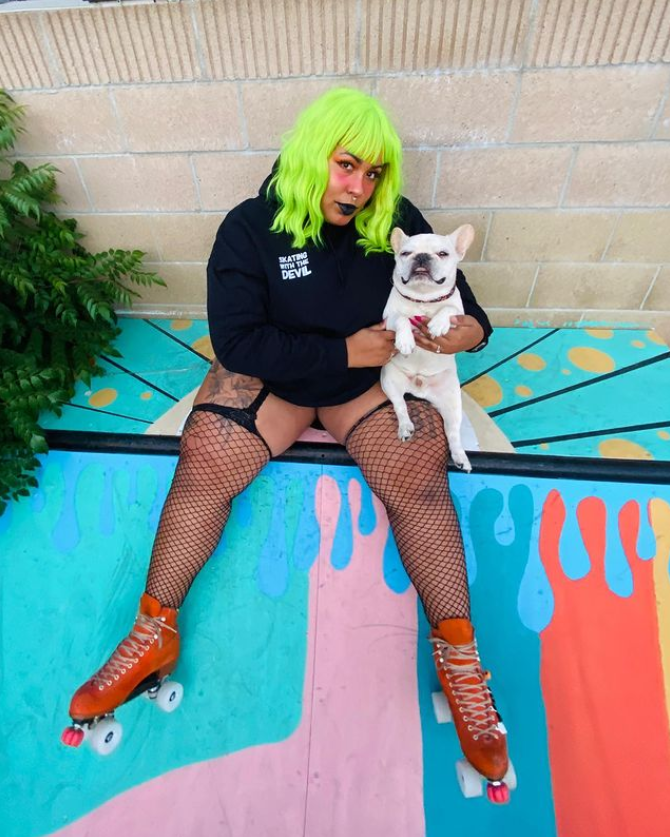
One of my favourite skating influencers @fat_girl_has_moxi-follow her for cool skate stuff and cute dogs!
Skating in the Name of (Self) Love
I didn't know it at the time, but I needed skating. Having this hobby that I don't feel the need to monetize or get perfect at on any timeline has given me the space to fail, then get back up and realize that failure is not something to fear. If I fall or mess up a move, no one is coming to take my skates away from me or call me a poser. I simply get back up and try again. It seems so simple, but it was a lesson that I had been bypassing in every aspect of my life, and I didn't see just how deeply it was affecting me until I pushed through those feelings and strapped some wheels on my feet.
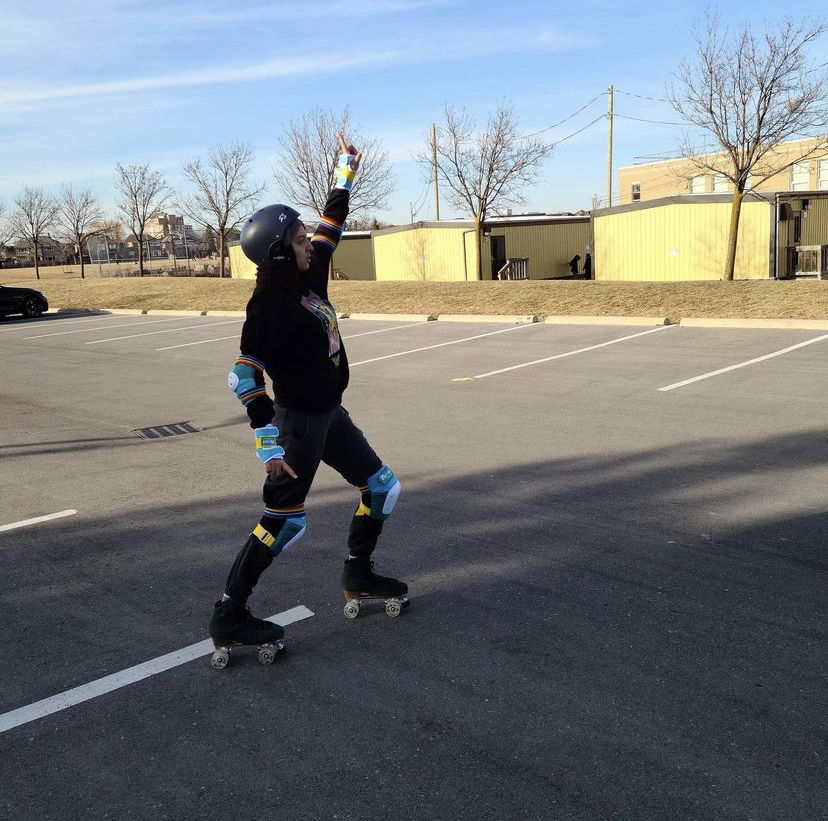
Me, mere seconds after being told to "strike a cool pose"
Now, I just want this feeling for everybody. It doesn't have to be skating, but everybody deserves to feel the gentle rebellion of doing something just because it makes you happy. In this society that runs on instant gratification, I think it's important.
If this post has piqued your interest in skating, here are some of the folks I follow who helped me get excited about it:
@fat_girl_has_moxi AKA Courtney Shove
Queer Girl Straight Skates- Shove's partner, who makes great skating tutorials, reviews, and general life videos about skating
Simon Slays 55-if I can't find a tutorial I like on QGSS, chances are Simon Slays has it. Her videos are really great for beginners!
Skate with Tess-A Canadian skater! Also great if you wanna know more about derby skating.
Retro Rollers-Based in London, Ontario, this is where I bought ALL of my roller gear from. Owned and operated by a husband and wife duo, these two were SO helpful, kind, and responsive when I was buying my skates. I had to do it all online and couldn't physically try them on and they did their damndest to make sure I got the right size. A really, really great small business to support if you're looking to get into any kind of skating-not just quad skating.
And finally, no skating post would be complete without a fantastic skate playlist-so here's mine! It's a mix of classic disco hits, punk head-bangers, and fun pop bops. L8r sk8ers!